| item(s), Total: $0.00 View Cart |
| Shopping cart is empty. |
Hi There and welcome to our May 2013 e-newsletter!
Autumn seems like it has been a long time coming and we certainly haven't had much rain yet (apart from this week) - But other tell tale signs are before us - shorter days and cooler nights. Weeds seem to be emerging everywhere and deciduous trees are changing colour. Summer is finally behind us - so I hope you get to enjoy some time in the garden now it is cooler! Don't forget to let me know if there is anything you would like to see in future newsletters - and I hope you enjoy this one! Cheers, PS. Happy Mothers Day!!!
In this newsletter: Jobs for the garden this Autumn (and a great tip for slater control!!)
Here are a few things which you may need to address at this time of year:-
A HUGE thank you to Krista W. who shared this really useful tip about controlling slaters on our Facebook page: "Hi all, if you have a slater problem (eating your seedlings), the best solution we have had so far is put a bowl (or as many as you need) in the ground with the top of the bowl at ground level, add about a quarter of milk, and leave it for a few days. We buried 3 full bowls of dead slaters within 2 days. WARNING it does smell quite bad if you let the slaters break down in the milk for too long. This was the most effective thing for us to get the population down and allow us to grow seedlings again! Chooks are also a great solution but we did not want the chooks to eat all those lovely worms that came in your beautiful soil!!"
Also thanks to Kylie H. who shared this pic with our Facebook page a few months ago - showing how successful a trap made from upturned citrus skins can be. Simply put these around the garden, then pick them up (usually mornings) and throw them in the bin, or feed to your chooks! It's a great photo - thanks for sharing!
There are a huge range of winter vegies and herbs which will grow well if planted out now:-See our ‘when to sow’ chart: Generally it's a great time for those winter vegies like spinach, kale, cabbage, broccoli, onions, potatoes, peas, carrots.... In fact autumn is in our opinion the best time to grow in Perth - so take advantage of the climate and get growing! We are receiving new seedling stock every week, with more and more winter vegies coming in. Also expected soon - another Eden Seeds order. If your garden is like ours, by the end of summer it is really struggling. We keep things alive, but don't over use water, so any especially sensitive plants often don't make it. (We have a small 'intensive' zone near the house which gets a little more TLC.) So when preparing for a winter planting, we really need to put some time into preparing the soil. Firstly, soil which has dried out completely over summer is going to be water repellent. You may wish to think about adding 'Sand Remedy' or maybe pure bentonite clay into the soil, and certainly an amount of organic matter to bring up nutrition. Soak the soil thoroughly. Turn it through lightly and soak again. Remember when you were a kid and made mud pies? Well that's what you'll need to do here. Be prepared to use a considerable amount of water, but you WILL find the consistency changes as you work it through. And the good news is, you should only need to do this once. Mulching the soil will certainly help keep moisture in (and we always recommend this), but at this time of year even if the very top layer crusts over, the soil below will remain damp below. Adding rock dust at this time is also beneficial. Once moist, the beneficial microbes in the soil will begin to build up and these are the guys which make your plants thrive.
Garden Week - Sustainability Square
This year we expanded our display area and incorporated 14 different 'sustainability tips' with ideas and information on things like companion planting, weed control and wildlife attracting plants. Many people commented on the useful information we presented, and hopefully we encouraged people to have a go at being even just a little self sufficient! Thanks to Zanthorrea Nursery, Water Installations, The Worm Shed and Guildford Town Garden Centre for loaning us their wares to form part of our display - it is much appreciated.
Growing in greenhouses is something not many people in Perth do. Normally we work with the seasons and grow what we can, when we can. One option that is becoming more popular is the option of a greenhouse to extend the growing seasons. Having a Greenhouse enables you to control climatic conditions and enables you to: - start spring seedlings weeks before you can do so out doors. Greenhouses are available in many sizes and materials. Of course, you can make your own 'mini-greenhouse' devices using plastic sheeting, upturned plastic containers or bottles quite successfully. Old windowframes can be re-cycled to make a 'cold frame' - an enclosed box with a glass lid which acts like a greenhouse. However, if you are intending on growing a lot of your own produce from seed, you may wish to consider a more permanent structure.
As greenhouses are ususally humid environments, good ventilation and airflow is essential to avoid fungal problems. Most have vents on the roof which can be openened to allow heat to escape. Doors should be left open during the day to help with this. If you are interested in expanding your growing potential, it might be worth considering a greenhouse. An Australian company 'Sproutwell Greenhouses' makes a range of greenhouse sizes and accessories (shelving, etc.). One we really like is the 'Mini-Greenhouse' - perfect for a few seedling trays and potted herbs. These sell for $185. We have one on display in the shop, if you are interested in seeing the quality and material used.
One of the most popular plants we sell (and grow) would have to be Silverbeet. It produces pretty much year round (if given ideal conditions), and each plant provides you with many, many leaves over its life. Plants will often live for two years, so they are certainly good value! If you ever have a surplus, chooks LOVE them – so they are useful, practical plants to include in your garden. Of course, snails, slugs and caterpillars (in particular) find them tasty too – so you do need to monitor pests at certain times of year.
It produces light grey spots with brown margins on the older leaves. These spots fall out and create ‘shot holes’ in the leaves. The disease is favoured by warmer temperatures (over 24°), high humidity or long periods of leaf wetness. In other words, our recent weather has been ideal for this fungus to thrive. It can come from infected seed, diseased crop trash and diseased host crops or weeds growing near the silver beet. I have noticed the Vegie bags we planted with Rainbow Chard for Garden Week are showing signs of this disease. For effect, we deliberately crowded these plants and ensured they were well fertilised to have lots of lush leaf growth. Add to this diligent overhead watering and there is the recipe for perfect fungal conditions! Interesting to note it is only over the last two weeks now that the spots have emerged - my theory is leaves are staying wetter for longer, now that the plants are not in full sun and daytime temperatures are lower. Not necessarily disastrous (especially to home growers) this disease is best controlled by removing and destroying infected leaves (or plants, if it is very widely spread), and by spraying with a natural fungicide like garlic. A seaweed tonic may be useful too. It can develop within 14 days of infection under ideal conditions. The spores are spread by water droplets, wind or insects onto the younger leaves or nearby plants.
Eating leaves which have a few spots will do you no harm. Once the weather conditions change, and providing the plant is otherwise healthy and actively growing, you may well find the disease symptoms ‘disappear’ and new growth is lovely and healthy. If you find yourself with an excess of silverbeet, it can be lightly cooked then frozen for later use. In our very first newsletter, we featured a recipe for Spinach/Silverbeet Pie - a firm family favourite in our house. Here's the link if you're interested: http://www.greenlifesoil.com.au/newsnov10.htm
To bring the two together, we are launching a quarterly Garden Photo Competition! Send us in a photo of an area of your garden you love, with a brief explanation. (Hopefully you use our products - but it's not a condition of entry.) You can either e-mail the photo or post it to our Facebook page (as others have done already). You must be willing for us to use the picture in any promotional material - however please note we will never use your full name or address (just something like "Beverly from Bedford" or "B.Black from Bicton". The prize (to be drawn each quarter) will be a trailer load of compost or manure for your garden (does not include delivery). This photo was sent in by Amanda T. Showing lots of work getting ready to transform the back yard into a edible garden! Thanks Amanda & good luck!!
New SUPER Edible Plant Nursery Did you know that WA's largest Edible Plant Specialist Nursery is now open - just up the road from The Green Life Soil Co? Joe Tassone (Tass1 Trees) and Leesa Caldwell (The Greenhouse Organic Seedlings) have gone into a business venture on the corner of Wilson Road and Toodyay Road in Middle Swan. Together, they now have the largest range of edible plants available retail in WA, with vegie seedlings, herbs, a huge range of fruit trees, and some ornamental plants too. Whilst open, there is still much more to be done at the site; so make sure you pop out from time to time to check out expansion and development! Currently, the Nursery is open Thursday - Sundays, but will eventually become 7 days a week once things progress and propagation areas are completed. The current Tass1 Trees Nursery on Great Northern Highway will be closing, and all stock transferred to Middle Swan in time. They are callling the Nursery 'Sustainability Central' but for now, look out for the old Jane Brook Nursery sign which is still up on the corner. This is just up the end of Farrall Road, and right onto Tooday Road from us - less that 5 minutes away. So bring your trailer and stock up on the soil and the plants in one easy trip!
Pea straw makes a fantastic mulch for vegie gardens, as it breaks down and adds valuable organic matter to the soil. However roses, fruit trees, herbs and other general garden plants also love it. Use bales as a framework to construct a temporary vegie bed, or as a windbreak for sensitive plants. Throw a bale into the chook pen for them to scratch through. The choice is yours! Limit of 5 per customer, valid to 15th June 2013. So until next time – have a great time this Autumn in the garden! Have fun, and Let’s get dirty! (Don't forget - we'd love your feedback on this newsletter! Please contact us with your comments!) Thanks, Visit The Green Life Soil Co store or online shop for a range of garden supplies and organic garden products.
|



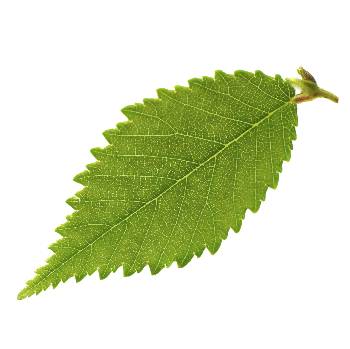

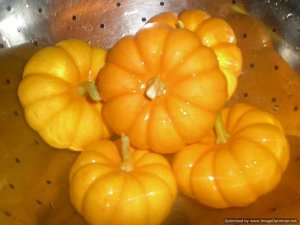 As things are coming to the end of their cycle in the garden, it’s time to clean out garden beds, compost spent plants (like our little 'Jack Be Little' pumpkins, shown here!), and to start planning your next cycle of planting.
As things are coming to the end of their cycle in the garden, it’s time to clean out garden beds, compost spent plants (like our little 'Jack Be Little' pumpkins, shown here!), and to start planning your next cycle of planting.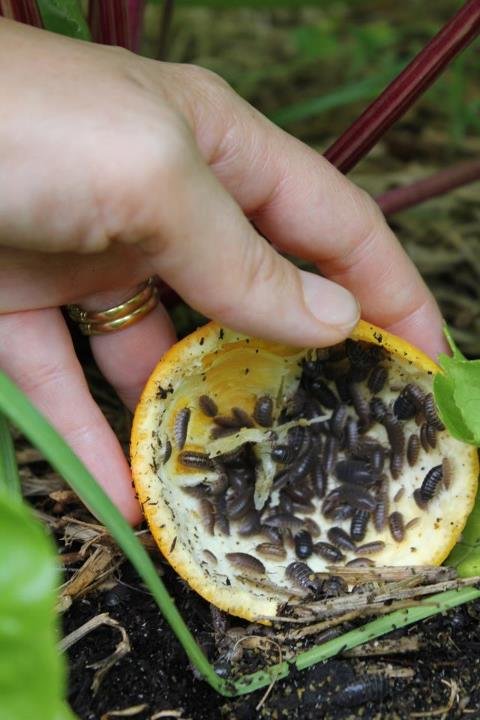 Slaters are an on-going problem for many gardeners, and can be difficult to control organically. It's always really useful to have another strategy to try, so thanks Krista!
Slaters are an on-going problem for many gardeners, and can be difficult to control organically. It's always really useful to have another strategy to try, so thanks Krista! Garden week was on again at Perry Lakes April 18 - 22, and this year we were excited to be part of 'Sustainability Square' once more.
Garden week was on again at Perry Lakes April 18 - 22, and this year we were excited to be part of 'Sustainability Square' once more. 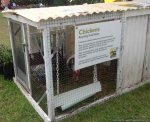
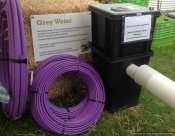
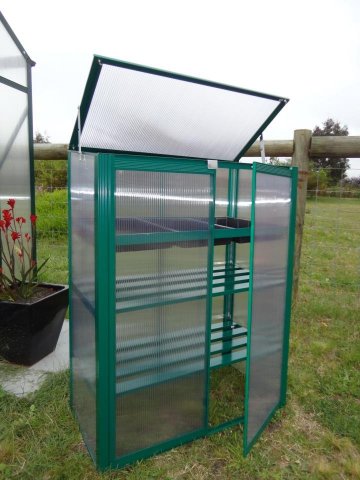 Always consider the frame as the most important part of the greenhouse. You need to make sure it is strong and will last. These days, plastic film or polycarbonate sheeting is used more than glass. The attachment of the sheeting needs to be strong also, to prevent your greenhouse falling apart in strong winds.
Always consider the frame as the most important part of the greenhouse. You need to make sure it is strong and will last. These days, plastic film or polycarbonate sheeting is used more than glass. The attachment of the sheeting needs to be strong also, to prevent your greenhouse falling apart in strong winds.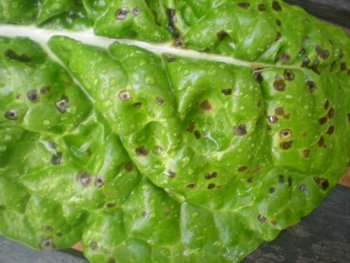 And they are relatively disease free – although we are seeing some fungal problems about now, namely Cercospora leaf spot (Cercospora beticola Sacc.) - see photo to the right.
And they are relatively disease free – although we are seeing some fungal problems about now, namely Cercospora leaf spot (Cercospora beticola Sacc.) - see photo to the right.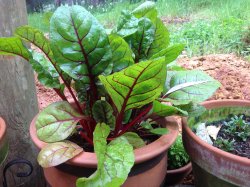 Crop rotation is one of the best ways to avoid problems in subsequent crops. Do not plant silver beet near older crops with the disease. Avoid growing silver beet on the same land more than once every three years. Keep weeds away which may act as disease hosts. (Pigweed/portulaca is one of the main host culprits.)
Crop rotation is one of the best ways to avoid problems in subsequent crops. Do not plant silver beet near older crops with the disease. Avoid growing silver beet on the same land more than once every three years. Keep weeds away which may act as disease hosts. (Pigweed/portulaca is one of the main host culprits.)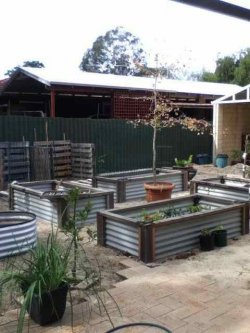 Many customers are justifiably proud of their gardens. We also know that many NEW gardeners love to see what other people have achieved.
Many customers are justifiably proud of their gardens. We also know that many NEW gardeners love to see what other people have achieved.  Exclusively to our newsletter readers, we are offering Pea Straw bales at the price of $10 each! (Normally $15 per bale).
Exclusively to our newsletter readers, we are offering Pea Straw bales at the price of $10 each! (Normally $15 per bale).




















